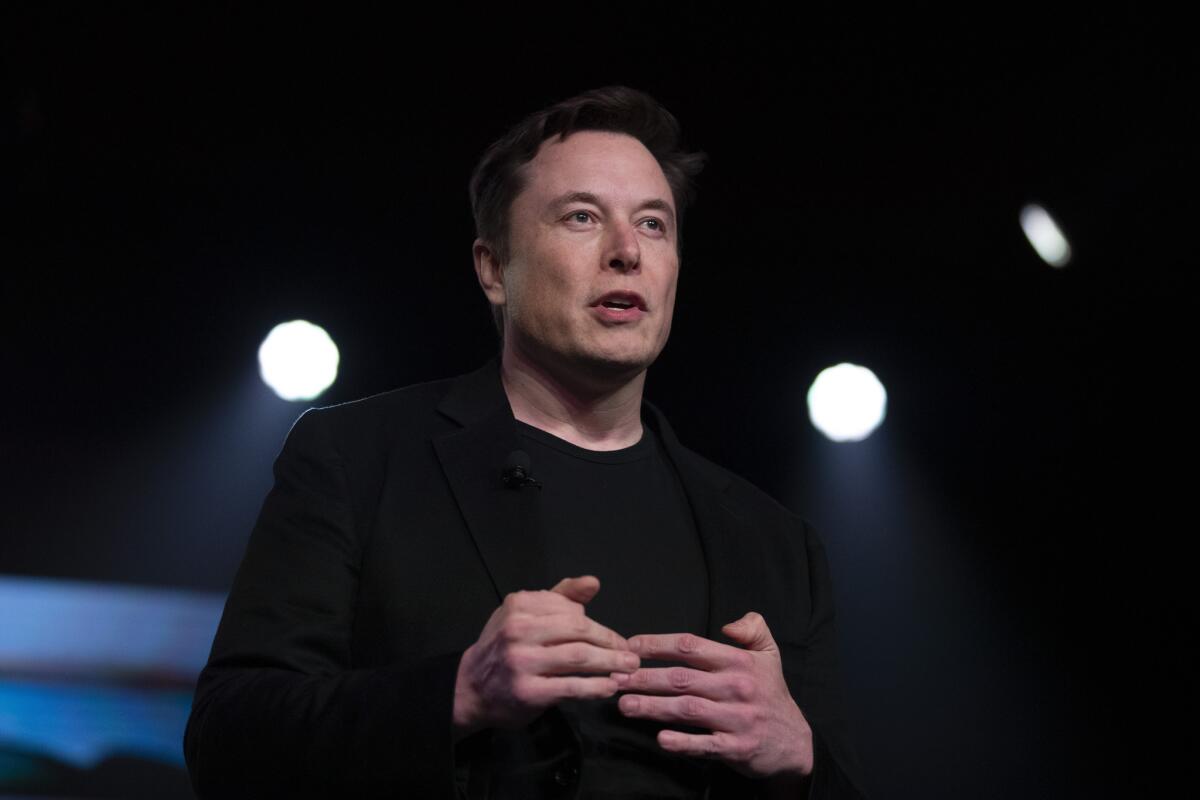Elon Musk-backed Neuralink unveils brain-implant technology

SAN FRANCISCO — Neuralink, the Elon Musk-backed company seeking to build brain implants to communicate with machines, unveiled the microscopic products it has been developing since 2017 and said it hopes to begin trials on human patients by the end of next year.
The secretive, 100-employee company revealed its vast ambitions in a presentation on Tuesday night aimed at recruiting more experts. “We want to have the best talent in the world,” Musk said at the California Academy of Sciences.
The chief executive of Tesla and SpaceX said the ultimate goal of Neuralink is to allow humans to achieve “a sort of symbiosis with artificial intelligence.”
Musk said humans risk being overtaken by AI-equipped machines, but if the brain can be enhanced with computer connectivity, “we can go along for the ride.”
Neuralink is just one player in an emerging field that could enhance human functionality or equip paraplegics with robots they could control with their minds.
Others include Facebook and CTRL-labs, the Amazon Alexa Fund-backed start-up that is trying to take a less invasive approach by focusing on neural signals anywhere on the body.
Neuralink intends to insert proprietary chips and information strips it calls “threads” into people’s brains, which it said could bring huge medical advances.
“I’ve been humbled by how helpless we are treating neurological diseases,” said Matthew MacDougall, Neuralink’s head surgeon. “We have the potential, for the first time in history, to solve some of these problems.”
Executives said their first emphasis will be to help patients with severe brain disorders, but the goal of the company is to design a miniature, wireless implant that ordinary individuals would elect to install — “something more like Lasik” eye surgery, said MacDougall — and then control it through an iPhone app. They spoke of communication via thought alone and of restoring motor and sensory functions, such as giving sight to the blind.
The company said one of its biggest achievements to date was the design of a robot capable of “rapidly” and “precisely” implanting into the brain hundreds of “threads” — information strips thinner than a human hair — which Musk said could “increase by orders of magnitude the number of neurons you can read from and write to in safe, long-lasting ways.”
The start-up also showed off a proprietary 4mm sensor, called the N1, which it seeks to implant into the brain and then connect to a device a person would wear behind the ear.
Max Hodak, Neuralink’s president, acknowledged that the path to development would be long. He said the company has not yet begun to pursue approval from the U.S. Food and Drug Administration and would require tremendous outside help and academic partnerships. “We are under no illusion that we can do all the scientific research ourselves,” he said.
Recognizing that these ideas can sound like they were pulled from science fiction, Philip Sabes, Neuralink researcher, said the foundational research for stimulating the brain was “rooted in over a century” of research.
Hodak said that when he was first approached by Musk more than two years ago he was not convinced the ideas could become reality, but he was persuaded by the visionary’s approach. “You have to be very careful telling Elon something is impossible,” he said in the presentation. “It better violate a law of physics.”
© The Financial Times Limited 2019. All Rights Reserved. FT and Financial Times are trademarks of the Financial Times Ltd. Not to be redistributed, copied or modified in any way.






